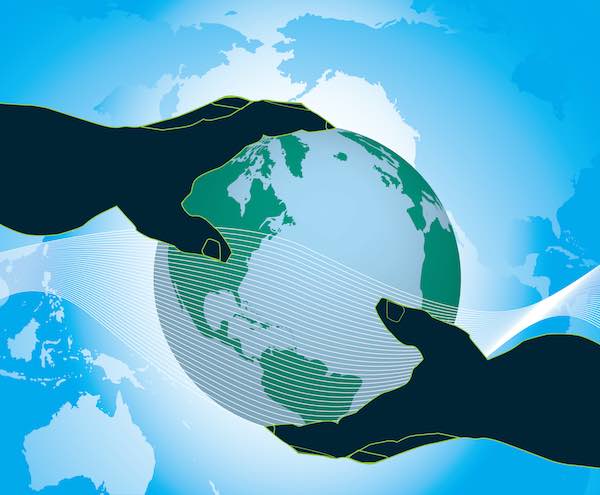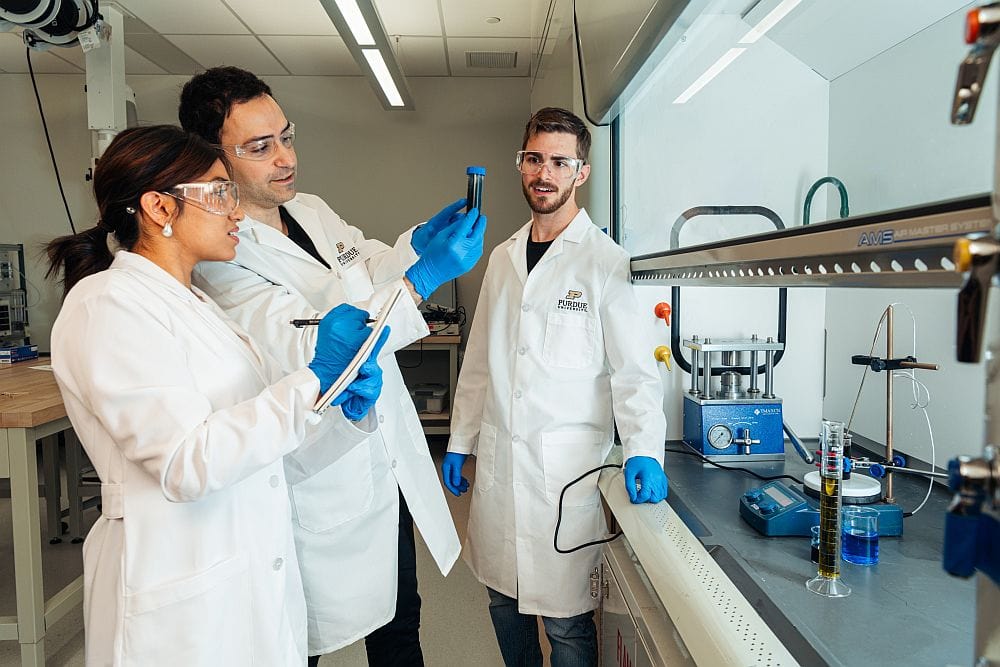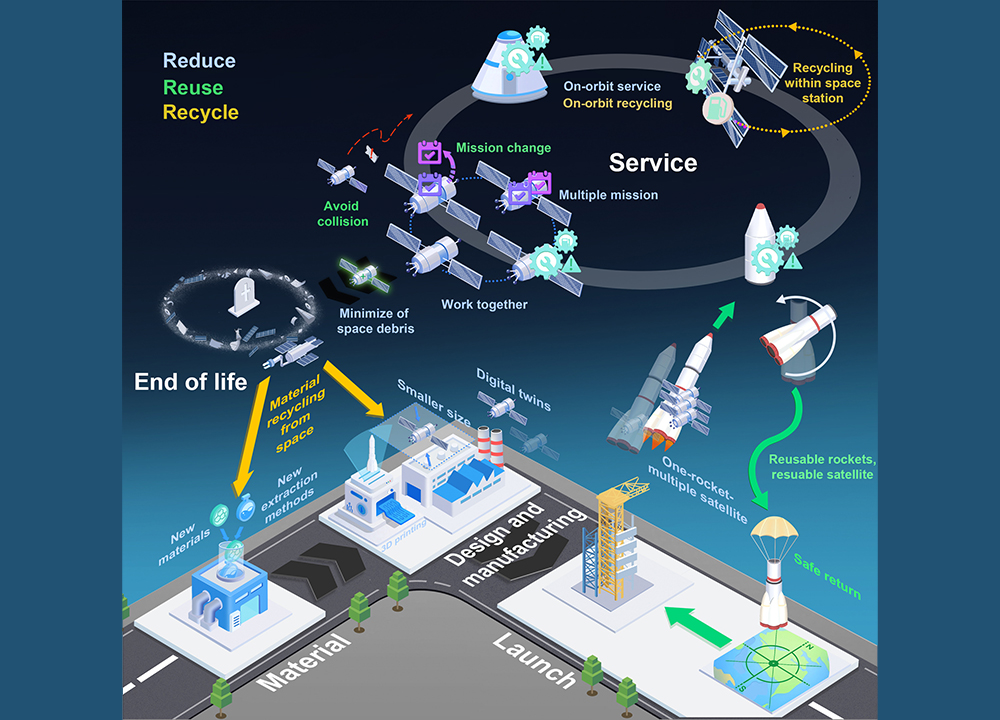
[Image above] Credit: Cindy Schultz; Flickr CC BY-NC-ND 2.0
This post comes to us from members of the World Materials Research Institutes Forum: Laurie Locascio, Michael Fasolka, Stephen Freiman, and Nick Barbosa.
The World Materials Research Institutes Forum (WMRIF) was formed at the National Institute for Materials Science in Japan in 2005. Its mission is four-fold:
- Provide technical advice in materials science;
- Stimulate worldwide involvement in the design and implementation of materials science activities;
- Promote collection and exchange of materials data among members; and
- Advance professional development of material scientists.
There are currently more than 50 members of the WMRIF, representing six continents. Laurie Locascio is current president of WMRIF, and Michael Fasolka is secretary.
WMRIF members meet in a biannual general assembly. The 7th General Assembly took place in Bangkok, Thailand, June 19–22, 2017, and was hosted by the National Metal and Materials Technology Center (MTEC). General assemblies consist of a technical program as well as a session in which WMRIF members discuss topics of mutual interest.
There are currently four task groups that operate within the WMRIF.
Task group 1: Outreach to underrepresented regions
The purpose of this task group is to identify regions throughout the globe that are underrepresented in the WMRIF in terms of materials science R&D. WMRIF is reaching out to laboratories in these regions to give aid, where appropriate, to their materials science programs. The immediate focus of this task group is on material science and engineering laboratories in countries throughout Africa, with a particular emphasis on assisting early career scientists.
Task group 2: Ten materials needs for the future
This task group has attempted to identify, and continually update, the ten most important topics in the field of materials science and engineering. The current list is described below.
Task group 3: Early career scientists
Scientists in early stages of their professional careers can be the leaders of tomorrow. WMRIF contributes to their international experience by organizing biannual workshops for early-career material scientists and engineers. As part of these workshops, a number of the attendees participate in a speaking contest. The highest scoring individuals, as determined by a group of senior scientists, are awarded stays at WMRIF laboratories of their choice. All travel and living expenses are paid by the host laboratory.
The 5th International Workshop for Early Career Scientists was held the past November in Tsukuba, Japan. Winners of the speaking contest at this workshop included representatives from Sandia National Laboratories and Lawrence Livermore National Laboratory in the U.S., National Physical Laboratory (NPL) in England, Bundesanstalt fur Materialsforschung (BAM) in Germany, and National Institute for Materials Science (NIMS) in Japan.
Task group 4: VAMAS liaison
The Versailles Project on Advanced Materials and Standards (VAMAS) is an international organization with a goal to develop standardized measurement methods and reference materials for more rapid introduction of new materials into the global economy. This WMRIF group leads an effort to coordinate work with VAMAS particularly in the area of database development and implementation.
Ten materials needs for the future
The mission of one of the WMRIF task groups is development and dissemination of the ten most prominent trends and challenges in materials science and engineering needed for future economic, environmental, and social needs. Discussions among members of WMRIF created this list, which is continually being reviewed and updated. Following is a synopsis of the current challenges requiring materials innovations.
- Renewable energy and energy storage (RE)
- Materials for more efficient and less expensive solar cells (e.g., perovskites)
- Non-rare earth magnet materials for wind turbines
- Improved materials for geothermal power
- Improved materials for energy conversion (e.g., batteries, thermoelectrics)
- New materials for nuclear power and improved testing procedures
- New materials for hydrogen storage
- Lower weight transportation (LT)
- Lightweighting of alloys
- Improved composites
- Sustainable buildings and infrastructure (SB)
- Fire resistant materials
- Novel “green” building materials
- Medical technologies and biological functionalization (MT)
- Improved materials for bone and tissue replacement
- Potential health and safety issues with nanoparticles (e.g., TiO2, carbon nanotubes)
- Materials for implantable devices
- Managing climate change and natural catastrophes (CC)
- Materials for carbon capture
- Pollution reduction (e.g., SOx, NOx)
- Environmentally friendly cement production methods
- Rapid design and manufacturing (RD)
- Additive manufacturing
- Material interface effects
- More efficient test and evaluation procedures
- Joining and repair of materials
- Recovery and use of scarce resources (SR)
- Substitution of earth-abundant materials for critical materials
- Enhanced recycling
- Materials efficiency
- Potable water retrieval, supply, and purification (PW)
- Materials for purification (e.g., membranes)
- Materials for desalinization
- Lifetime prediction and long-term service of systems (LP)
- Improved corrosion protection
- Improved non-destructive evaluation procedures for infrastructure (e.g., buildings, bridges)
- More rigorous statistical analysis techniques
- Modeling and data (MD)
- Techniques for property prediction based on atomic structure
- Availability of fundamental materials data
- Better data mining techniques
To understand the relative importance of each of these material needs, we placed them in one of two categories: economic or socio-environmental. While such a division is clearly arbitrary and time-dependent, it is useful to view these comparatively as shown in Figure 1.

Figure 1. Ten material needs plotted as a function of their potential economic and socioenvironmental impacts.
It seems clear that two of the most important needs for the future of the earth and mankind are sources of renewable, safe, non-polluting energy and the mitigation of energy sources that contribute to climate change. An excellent guide to some of these materials is given in a special issue of the MRS Bulletin, “Materials for Sustainable Development”.1 An interesting tool to examine these issues is through the so-called Kaya Identity2, shown below.

In this equation, F is global carbon dioxide emissions; P is global population; G is global gross domestic products; and E is global energy usage. While, at first glance, the Kaya identity appears to be an oversimplification, it can yield useful insights as to where progress can be made to reduce carbon dioxide emissions.
P and G fall outside the realm of science and technology, and so cannot be addressed. Therefore, we must concentrate on reducing E/G through reduced energy demand and F/E through cleaner energy uses. An important issue to which WMRIF can contribute is how cooperation and collaboration among material research laboratories around the world can more rapidly lead to these goals. Such collaborations will be a major topic of discussion at the next general assembly to be held in Thailand this coming June.
Acknowledgements
The authors gratefully acknowledge helpful discussions with Dr. Martin Green.
References
- “Materials for Sustainable Development”, MRS Bulletin 37, (4) (2012)
- Kaya, Yoichi; Yokoburi, Keiichi Environment, energy, and economy : strategies for sustainability. Tokyo [u.a.]: United Nations Univ. Press. ISBN 9280809113. (1997).
Author
Laurie Locascio, Michael Fasolka, Stephen Freiman, and Nick Barbosa
CTT Categories
- Education
- Market Insights
- Material Innovations
Related Posts
Celebrating the US Semiquincentennial: Ohio Creativity Trail
December 16, 2025


